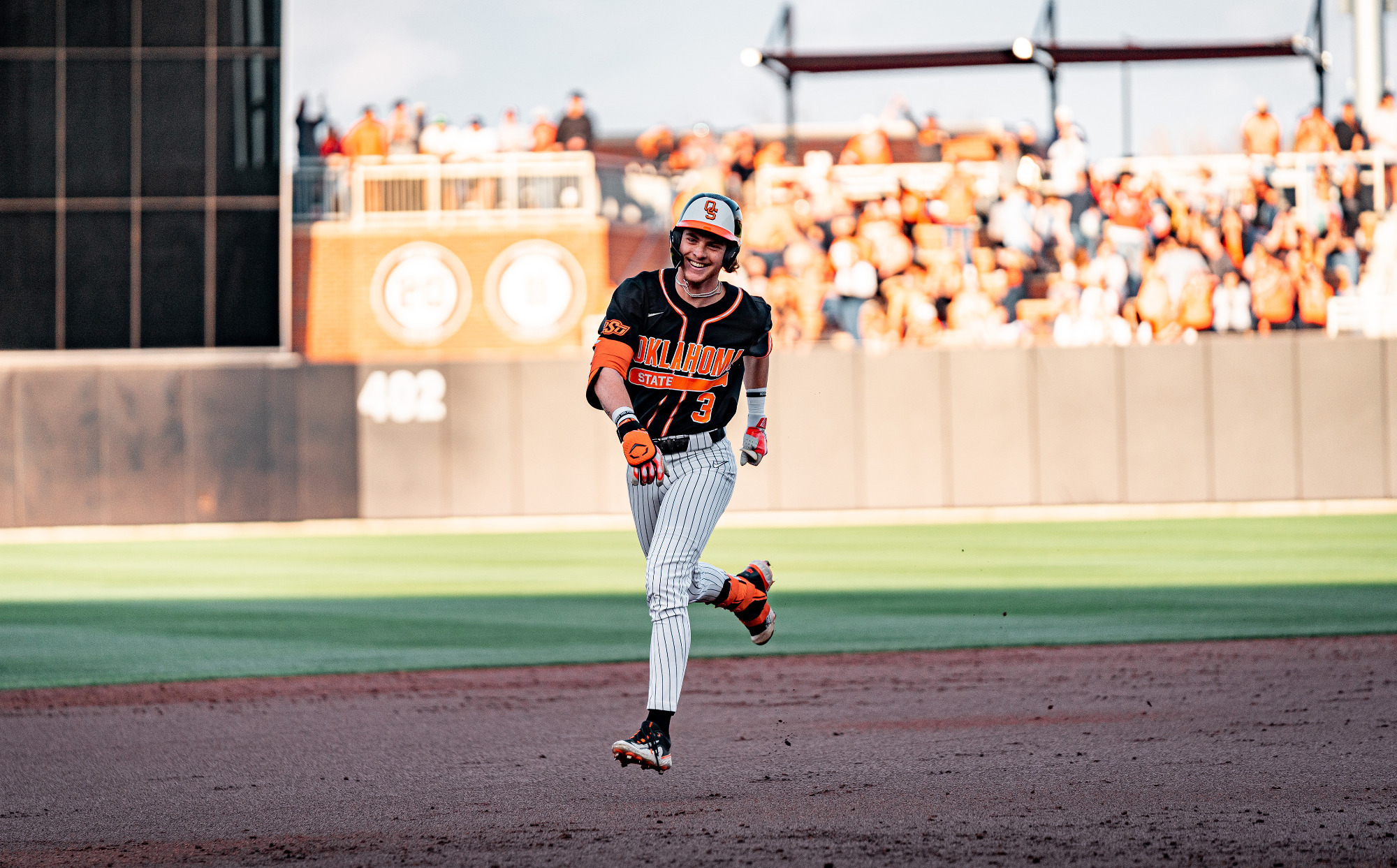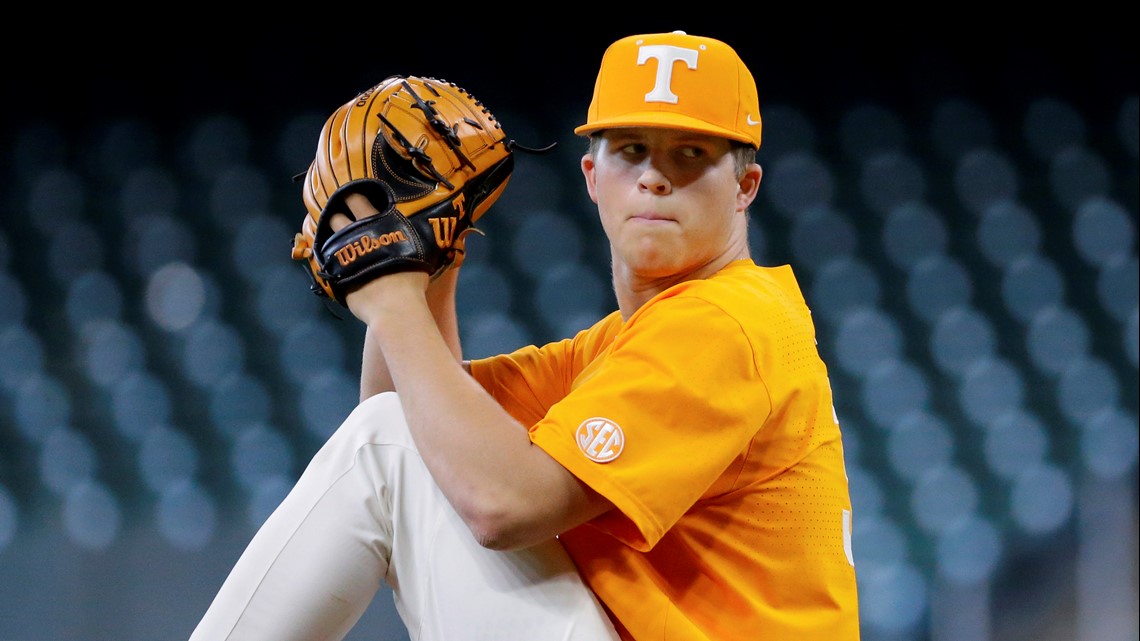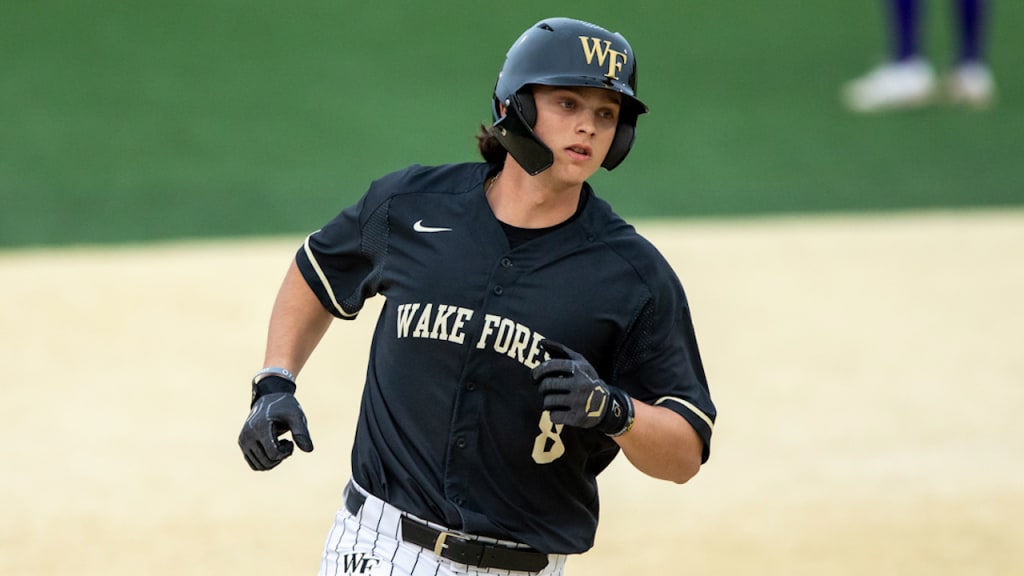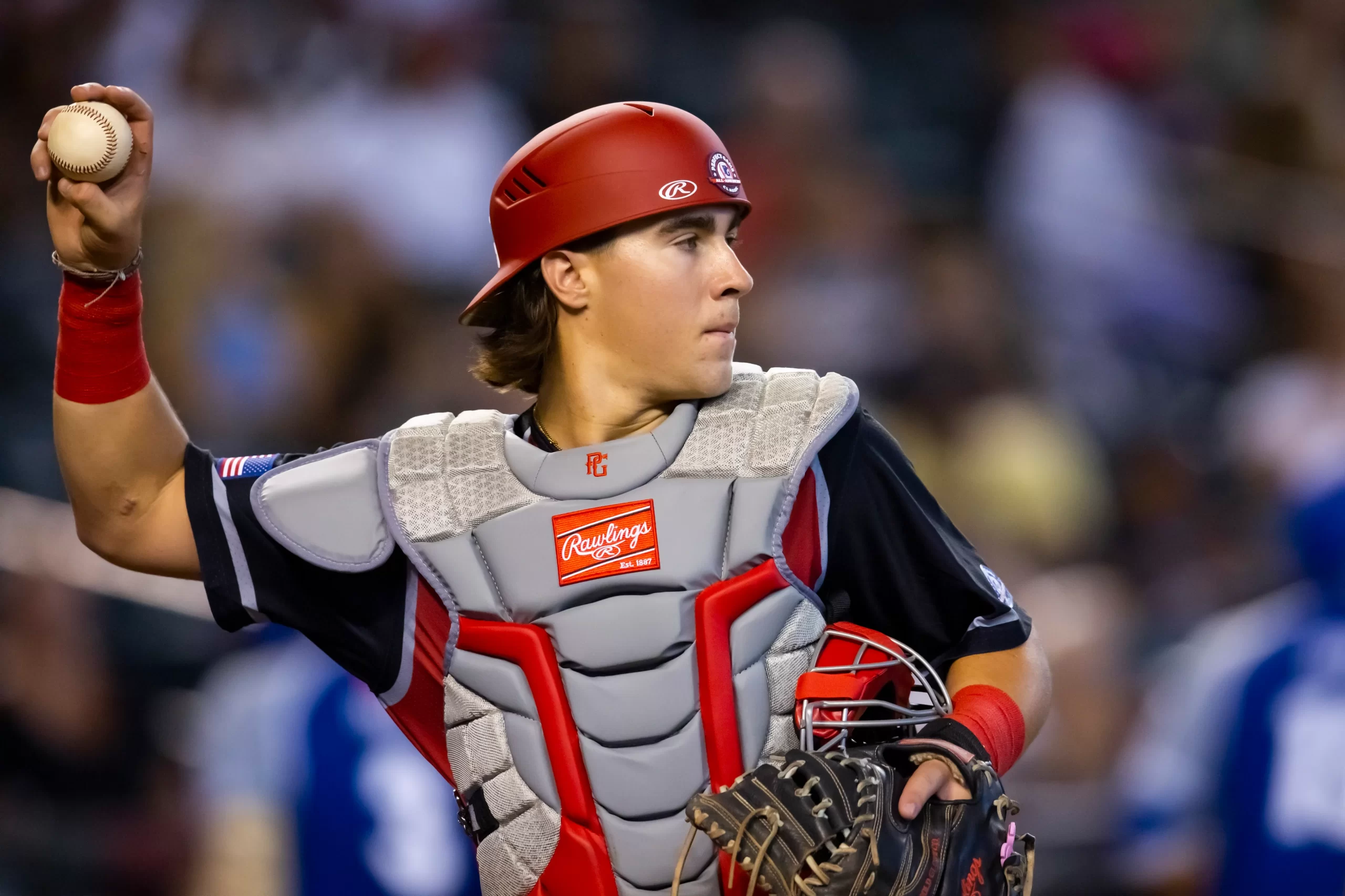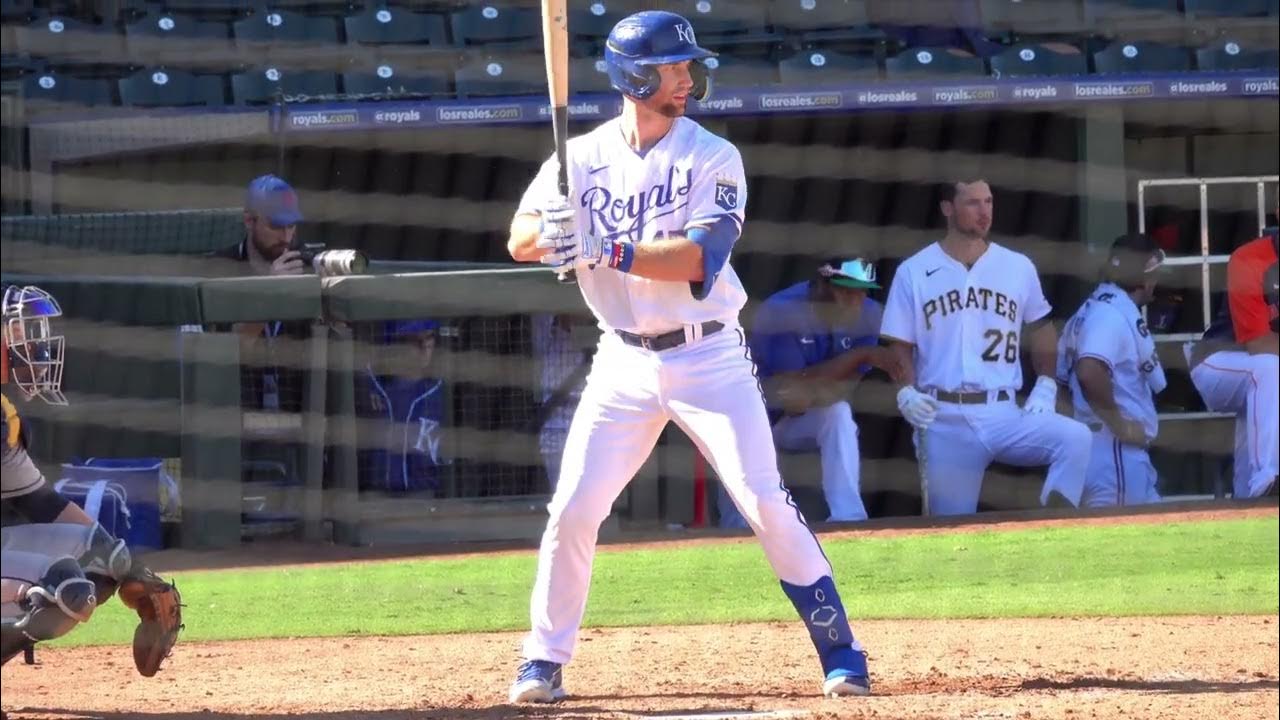The 2024 MLB Draft isn’t quite as deep as last year’s impressive class. There’s still premium talent at the top, headlined by Travis Bazzana and Charlie Condon. The prep class in particular isn’t as deep as in recent years. There’s plenty of college talent to be found for teams. Injuries this season have impacted J.J. Wetherholt and Nick Kurtz, but both still have a strong claim to the top ten or just barely outside of it. There’s plenty more time between now and this summer’s College World Series in June. For that reason, these rankings should be seen as fluid with plenty of change on deck as the draft season continues to unfold.
1. 2B Travis Bazzana – Oregon State
Travis Bazzana will be a prize for whichever team gets the chance to draft him this summer. Unfortunately for most teams, that chance won’t likely extend past the Cleveland Guardians with the first overall pick. Bazzana has perhaps the best hit tool in the entire draft class. He pairs plus bat-to-ball skills with the potential for plus power and an excellent approach at the plate. Defensively, he has the makeup of a true second baseman and should be at least average for the position.
2. OF Charlie Condon – Georgia
Charlie Condon has a quick, compact swing from the right side. He lifts the ball well with excellent bat speed. The result is a well-rounded product at the plate. The power is well ahead of the hit tool at this point, but that isn’t to say either is below average. He set the freshman record with 25 home runs for the Bulldogs in 2023 and has followed that up with even more power output as a sophomore. He walks more than he strikes out and limits swing-and-miss. His speed on the basepaths is around average and although he won’t do much to impact the game with steals, he isn’t anywhere near a liability in that regard.
3. OF/SS Konnor Griffin – Jackson Prep (MS)
Konor Griffin is the clear cream of the crop amongst this year’s prep class. He’s played at shortstop and center field thus far in high school but carries the most value as a true center fielder. His plus speed should play nicely there and he has shown great instincts as a defender. At the plate, the current profile is power over hit tool but the hit tool could certainly catch up if Griffin can find more consistency at the plate. He’s 17 years old right now but will turn 18 by draft day. Thus far in 2024, he’s allowed his speed to impact on the basepaths with 68 stolen bases and a .548 average.
4. OF Braden Montgomery – Texas A&M
Braden Montgomery transferred to Texas A&M prior to the 2024 season and he’s only been better since arriving. At Stanford, Montgomery had already put his outstanding power on display and the strikeouts had started to decrease. He has a quick swing with smooth swing mechanics. He’s a switch hitter but much better from the left side where he can really get into his raw power. Since arriving at Texas A&M, he’s improved his strikeouts even more drastically and found more pull-side power. As a two-way player, he touches 100 on the mound but will certainly be a hitting prospect at the next level. That strong arm will make him a force in a corner outfield role where he should be above-average defensively.
5. RHP Chase Burns – Wake Forest
Chase Burns is as close to MLB-ready as you’ll find among this year’s MLB Draft crop. He throws an elite fastball that touches triple-digits regularly. The fastball rides extremely well up in the zone and it’s only gotten better since he transferred to Wake Forest. He pairs that with a devastating slider that sits in the low 90s with extremely high spin rates. His other two weapons aren’t used nearly enough, but there’s the potential for more from both with more development at the next level.
6. 1B Nick Kurtz – Wake Forest
An injury slowed the 2024 season for Nick Kurtz but now healthy, he’s picked up right where he left off in 2023. He offers perhaps the best mixture of extreme upside and low risk as any prospect in this year’s MLB Draft. His contact rate and average exit velocity are both next-level good. Kurtz has a smooth, repeatable swing and his mechanics allow him to adequately cover the plate. He regularly catches up to velocity up in the zone and does damage.
7. SS Seaver King – Wake Forest
Seaver King is a hit-over-power prospect at this point, but he still offers plenty of raw power that allows him to generate loud line-drive contact. He tends to swing over pitches, resulting in a high ground ball rate but his above-average speed allows him to impact the game even with the ball on the ground. His swing is relatively easy with few moving parts. He pairs that with a strong eye at the plate and good plate discipline. With his raw power, the potential exists for King to be a perennial 20-home run hitter should he find the ability to lift the ball with more consistency. He tends to swing more often than he should, resulting in fewer walks and a tad more groundball outs.
8. 3B Bryce Rainer – Harvard-Westlake (CA)
Bryce Rainer has been rising as a prep prospect in this year’s draft. He comes in here as the second prep prospect on the board behind only Konnor Griffin. Although Griffin will likely make the move to center field, Rainer will stick on the infield. He will likely mature into his frame to lean more heavily on his plus power potential, moving him to third base. He has a smooth swing from the left side. There aren’t too many moving parts in his swing mechanics and he’s relatively quick to the baseball. He covers the inside of the plate well but could struggle to cover the outside plate at times.
9. OF Carson Benge – Oklahoma State
Benge has a twitchy swing from the left side. It’s an open stance with quite a few moving parts and fluid hands before the swing. Despite the moving parts, Benge does a nice job barreling the ball when he makes contact and can generate good line drive power. He has a good, patient approach at the plate and does a nice job limiting strikeouts at the dish. Benge combines his strong approach and well-above-average contact rates with an all-fields approach. He has a tick above-average speed and an impressive throwing arm that should make him a force in right field.
10. LHP Hagen Smith – Arkansas
The gap between Hagen Smith and Chase Burns isn’t as large as some would have you believe. There’s an argument to be made that Smith could be the safer pick in the draft due to less effort in his overall delivery mechanics. Smith also pitches from the left side, which only adds to his eventual ceiling at the next level. Much like Burns, Smith has a top-notch fastball that features upper-90s velocity and some arm-side movement. He pairs that with a strong arsenal that features an outstanding splitter, as well as a slider and a curveball. There’s plenty of reliever risk, but if a team is willing to take their time with Smith to help him develop better secondaries behind his fastball/splitter combination, the frontline starter upside certainly exists.
11. 1B/LHP Jac Caglianone – Florida
Jac Caglianone is perhaps the best two-way prospect we’ve ever seen from the college ranks. He has an impressive triple-digit arm at the plate and pairs that with the best power potential in the entire draft class. With that said, it seems unlikely that he will do both at the next level and his value is better as a pure hitter than as a pure pitcher. He’s a risky selection despite the tools because although he offers off-the-charts potential, there are aspects of his game that still need refinement. He’s improved the strikeouts substantially as his NCAA career has progressed but still struggles with chase rates. That leaves some questions about how good his hit tool could truly be. Defensively there’s not a large amount of value to be found. Caglianone is a true first baseman/designated hitter.
12. 2B J.J. Wetherholt – West Virginia
J.J. Wetherholt was a locked-and-loaded top-five pick at the onset of the 2024 NCAA season. Since then, he’s struggled with injury that has anchored his value some. There are a few questions about the hit tool. Wetherholt has impressive contact ability and strikes out at an insanely low rate. The game power, however, has been inconsistent throughout his college career. Aside from a boom in 2023, Wetherholt has been largely below-average in the power department, offering more line-drive gap power than true over-the-fence ability. He’s a true second baseman at the next level. There’s a chance he could make it work at shortstop, but it’s a true fit at second base and the bat could impact enough to play there.
13. 3B Billy Amick – Tennessee
Amick played 20 games at first base for Clemson in 2023 but has moved primarily to third base for the Volunteers this season. He’ll do enough at third that he could stick there long-term but the offensive value is what carries him this high. There are questions about his hit tool, namely chasing away from the plate. However, when he’s able to put bat to ball, the line drive power is outstanding. He holds his hands high in his stance and brings them down as he loads to swing. Simplifying those mechanics to make him a little quicker to the baseball could amplify what good power Amick already possesses. He’s a pull-happy hitter which could limit him at the next level. Although his walk rate has increased this season, historically Amick is an aggressive free-swinger at the plate looking to make contact and do damage.
14. OF Vance Honeycutt – North Carolina
Honeycutt is likely the best center field defender in this year’s draft class. He has blazing speed and great instincts in center. Offensively, there are still some questions. Honeycutt has shown loud power potential but has been unable to find that consistently for the Tar Heels. His swing is smooth to the baseball with excellent bat speed. Alongside the inconsistent power, the hit tool leaves plenty of questions as well. After hitting .296 in 2022, that mark was down to .257 last season. Thus far in 2024, he’s off to a much stronger start at .303 but the strikeout rate is alarming. He has struck out 28.4% this season, and that rate wasn’t much lower outside of ACC play.
15. 3B Cam Smith – Florida State
Cam Smith has an easy approach at the plate with few moving parts. He’s quick to the baseball and covers the strikezone well. He’s played third base exclusively this season and only appeared in just one game at shortstop for the Seminoles in 2023. The hit tool leads the way. He has a chance to be above-average in that regard thanks to a good eye at the plate and solid contact skills. The eye at the plate has improved substantially in 2024, quieting some concerns about the strikeout rate from a year ago. Although there is plenty of raw power to be tapped into, it’s more line-drive power thus far. With further refinement, Smith has the makings of a 20+ home run bat that should hit for average and play solid defense at the hot corner.

